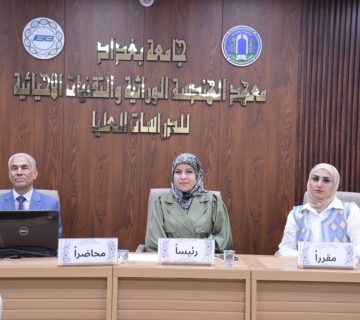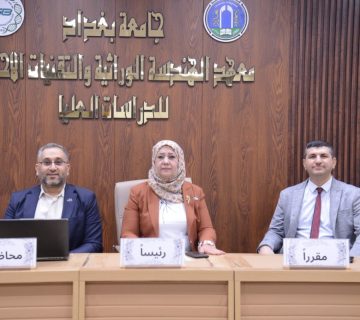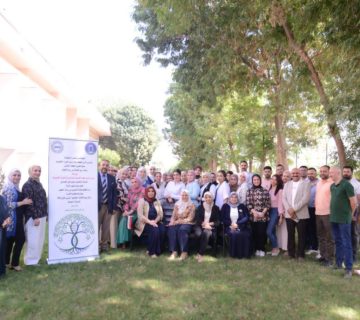The Institute of Genetic Engineering and Biotechnology for Postgraduate Studies at the University of Baghdad discussed the Ph.D. dissertation of student Haider Abdul-Har, titled:
“A Study of the Relationship Between NFKB1 Gene Expression and IL-17A Polymorphism in Iraqi Patients With and Without Diabetic Nephropathy,” held in the institute’s discussion hall.
The study aimed to investigate the relationship between the expression of the NFKB1 gene and the NFKB1 SNP (rs28362491) with blood glucose levels in Iraqi patients with and without diabetic nephropathy (T2DNP). It also aimed to study the relationship between IL-17 levels and IL-17A SNP rs2275913 genotypes in diabetic patients with and without nephropathy, as well as the association between inflammatory markers (NFKB1 and IL-17) and lipid profiles in these patients.
The findings showed no significant differences in age and gender distribution among the control, type 2 diabetes (T2DM), and diabetic nephropathy (T2DNP) groups, suggesting that these factors may be excluded as primary determinants in the development of diabetes.
The study indicated that patients with T2DM and T2DNP exhibited noticeable metabolic and inflammatory changes, including poor glycemic control, insulin resistance, dyslipidemia, and elevated levels of inflammatory markers — NFKB1 and IL-17A.
It identified strong associations between NFKB1 and IL-17A gene polymorphisms and the risk of developing type 2 diabetes (T2DM) and diabetic nephropathy (T2DNP).
The study showed a statistically significant positive correlation between NFKB1 and IL-17A levels in both T2DM and T2DNP groups, indicating that these inflammatory markers may contribute to inflammation and metabolic dysfunction in diabetic patients.
The study recommended that, due to the strong association between NFKB1 and IL-17A gene polymorphisms and the risk of T2DM and T2DNP, genetic screening could be considered in at-risk populations.
It also recommended proper blood sugar control, lipid management, and kidney function preservation in diabetic patients, especially those with nephropathy.










